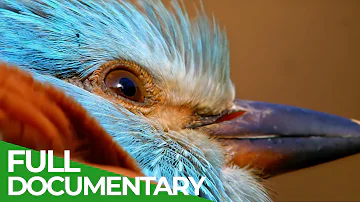
Lhasa Apso
Canis lupus familiaris

Meet the Lhasa Apso
The Lhasa Apso is a small, long-haired dog breed originating from the Himalayan mountains of Tibet. Traditionally bred as a sentinel in Buddhist monasteries, they are known for their keen hearing and alert nature. Lhasa Apsos have a distinctive floor-length, dense coat that provides protection against harsh mountain climates. Despite their small stature, they are confident, independent, and can be wary of strangers, making them excellent watchdogs. Their affectionate and loyal temperament makes them cherished companions for families worldwide.
Classification
Mammal
Habitat
Domestic; historically, mountainous regions and monasteries
Diet
Omnivore
Lifespan
12-15 years
Conservation
Least Concern
Weight
5-8 kg
📖Fascinating Facts
Mountain Origins
The Lhasa Apso was bred in the Himalayan mountains, which contributed to their hardy nature and thick, weather-resistant coat.
Excellent Hearing
Traditionally kept as watchdogs in Tibetan monasteries, Lhasa Apsos are renowned for their acute sense of hearing and alertness.
Royal Gifts
For centuries, Lhasa Apsos were considered sacred in Tibet and were gifted only to esteemed guests and royalty.
📋Detailed Description
The Lhasa Apso is a compact, robust dog breed, typically weighing between 5.4 and 8.2 kg (12–18 lbs) and standing about 25 cm (10 inches) at the withers. Its most distinctive feature is its dense, double-layered coat: a hard, straight outer coat overlays a softer undercoat, providing insulation against the harsh Himalayan climate. The breed has a relatively broad skull, dark, oval eyes, and pendant, feathered ears that contribute to its keen sense of hearing. Lhasa Apsos are renowned for their acute alertness and independent temperament, traits honed by centuries of serving as sentinels in Tibetan monasteries. Socially, they tend to form strong bonds with their families but can be aloof or wary toward strangers, reflecting their watchdog heritage. Their vocalizations are sharp and purposeful, often used to alert owners to unusual activity. While playful and affectionate with trusted individuals, they may display dominance or stubbornness if not properly socialized. Reproduction is typical of small dog breeds, with litters averaging 4–6 puppies. The breed is long-lived, with many individuals reaching 14–18 years, and some documented cases exceeding 20 years. Their intelligence and adaptability make them suitable for various living environments, though they require regular grooming and mental stimulation.
💡 Did you know?
Lhasa Apsos were believed to be reincarnations of Tibetan monks who were not yet ready to enter Nirvana.
🔬Research & Sources
Wikipedia Summary
The Lhasa Apso is a non-sporting dog breed originating in Tibet. Traditionally the breed has been used as an interior watchdog.
Last Modified: 6/1/2025
🎭Behavior & Social Structure
Lhasa Apsos exhibit vigilant and territorial behavior, often positioning themselves in elevated spots to monitor their surroundings. They are not aggressive by nature but are quick to alert their owners to perceived threats with a distinctive bark. Feeding behavior is typical of small companion breeds: they are omnivorous, requiring a balanced diet of proteins, fats, and carbohydrates, and can be prone to selective eating. Social interactions are marked by strong attachment to primary caregivers, with some individuals displaying a single-person preference. They may be reserved or even suspicious of unfamiliar people and animals, necessitating early socialization. Daily routines include periods of alert observation interspersed with play and rest. Unlike many breeds, Lhasa Apsos are relatively independent and can tolerate moderate periods alone, though they thrive on companionship and interactive play.
👶Reproduction & Life Cycle
Lhasa Apsos reach sexual maturity between 8 and 12 months, with females typically coming into estrus twice a year. Courtship involves playful chasing and mutual grooming. The gestation period averages 63 days, after which litters of 4–6 puppies are born. Neonates are altricial, requiring intensive maternal care for the first three weeks. Mothers are attentive, providing warmth, grooming, and frequent nursing. Weaning begins at around four weeks, with puppies transitioning to solid food by six to eight weeks. Responsible breeders emphasize genetic screening to reduce the risk of inherited disorders such as progressive retinal atrophy and renal dysplasia. There is no defined breeding season, as domestic dogs can reproduce year-round, but most breeders time litters to avoid extreme weather conditions.
🛡️Adaptations & Survival
The Lhasa Apso's dense, floor-length coat is a key adaptation to the cold, windy Himalayan environment, offering both thermal insulation and protection from snow and debris. Their compact, muscular build allows for agility and endurance on rugged terrain. The breed's acute hearing and strong sense of smell are evolutionary specializations for early detection of intruders, essential for their traditional role as monastery sentinels. Behaviorally, their wariness of strangers and independent decision-making reflect a need for self-reliance in isolated settings. Their relatively low energy requirements and ability to thrive on modest rations are further adaptations to the resource-scarce environments of their origin.
📚Research Sources
🎨Cultural Significance
The Lhasa Apso holds deep cultural significance in Tibetan society, where it was revered as a sacred dog believed to bring good fortune and spiritual protection. Traditionally, Lhasa Apsos were kept exclusively by nobility and Buddhist monks, often gifted as symbols of peace and prosperity. The breed is associated with the mythical Snow Lion, a symbol of strength and fearlessness in Tibetan mythology. In Buddhist belief, Lhasa Apsos were thought to house the souls of deceased lamas awaiting reincarnation. Their role as monastery guardians is well documented, and they remain a symbol of Tibetan heritage and resilience.
🔬Recent Research & Discoveries
Recent genetic studies have confirmed the ancient origins of the Lhasa Apso, placing it among the basal lineages of domestic dogs closely related to other Tibetan breeds such as the Tibetan Terrier and Shih Tzu. Ongoing research focuses on the breed's unique adaptations to high-altitude environments, including potential genetic markers for hypoxia tolerance. Veterinary research continues to investigate the prevalence of hereditary diseases, with advances in DNA testing improving breeding outcomes. Behavioral studies highlight the breed's cognitive complexity and problem-solving abilities, supporting anecdotal reports of their independence and intelligence.
🎥Wildlife Videos

Wildlife Stories: Love is in the Wild | SPECIAL | Free Documentary Nature
Wildlife Stories: Love is in the Wild | Special | Free Documentary Nature Watch 'Wildlife Stories: Talking to Survive' here: ...
Free Documentary - Nature

Wildlife - The Fascinating World of Wild Animals | Full Series | Free Documentary Nature
Wildlife - The Fascinating World of Wild Animals | Wildlife Documentary Watch 'Ocean Stories - Full Series' here: ...
Free Documentary - Nature

David Attenborough | Nature Documentary To Fall Asleep To (ai)
"Life on Earth" is your gateway to the breathtaking world of wildlife and natural wonders. Through captivating documentaries, we ...
Life on Earth - David Attenborough

Wild Asia - Fantastic Creatures of Tian Shan | Free Documentary Nature
Kingdom of the Bears: Masters of Wilderness | Free Documentary Nature Kingdom of the Bears: Asia's Brown Bear Mountains ...
Free Documentary - Nature

The Unique Wildlife of Brazil’s Rainforest
Explore the incredible biodiversity and unique ecosystems of Brazil's Mata Atlântica and other regions. The show delves into the ...
Real Wild

Wildlife's Rebirth - A True Natural Treasure | Free Documentary Nature
Wildlife's Rebirth in the Old Mine | Wildlife Documentary Watch 'Wild Canada - Nature's Untamed Beauty | Full Series' here: ...
Free Documentary - Nature
🌍Habitat Information
The Lhasa Apso typically inhabits Domestic; historically, mountainous regions and monasteries environments. Lhasa Apsos have adapted to their environments with specialized features and behaviors.
Primary Habitat:
Domestic; historically, mountainous regions and monasteries
More detailed habitat information will be available soon.
🛡️Conservation Status
The Lhasa Apso is currently classified as Least Concern. Conservation efforts are crucial for preserving this species for future generations.
Common Threats:
- 🏠Habitat loss and fragmentation
- 🌡️Climate change impacts
- 🎯Hunting and poaching
- 🏭Human-wildlife conflict
⚠️Threats & Conservation Challenges
As a domestic breed, the Lhasa Apso is not threatened in the wild and is classified as 'Least Concern.' However, the breed faces challenges related to genetic health due to limited gene pools and popularity-driven breeding practices. Common inherited conditions include progressive retinal atrophy, patellar luxation, and renal dysplasia. Overbreeding and puppy mills can exacerbate these issues. Additionally, improper care of their long coat can lead to skin infections and matting. The breed's independent temperament may be misunderstood, leading to behavioral issues if not properly trained and socialized. Population trends remain stable globally, but responsible breeding and education are essential for long-term health and welfare.
🔬Scientific Classification
Scientific Name
Canis lupus familiaris
Classification Hierarchy
🔍 About Taxonomic Classification
Taxonomic classification is a hierarchical system used by scientists to classify and organize living organisms based on shared characteristics and evolutionary relationships.
The system moves from broad categories (Kingdom) to increasingly specific ones, with each animal's scientific name typically consisting of its Genus and species.
📝Community Notes
Share your observations and insights about the Lhasa Apso with our community of wildlife enthusiasts.
Join Our Community
Sign in to share your observations and connect with fellow wildlife enthusiasts.
Sign In to ContributeNo community notes yet
Be the first to share your observations about the Lhasa Apso!
Explore Lhasa Apso
Select a tab above to learn more about this amazing animal.
📸Photo Gallery
No photos available for this animal yet.
🌟Discover More Wildlife
Continue your journey of discovery with more fascinating animals from our database
